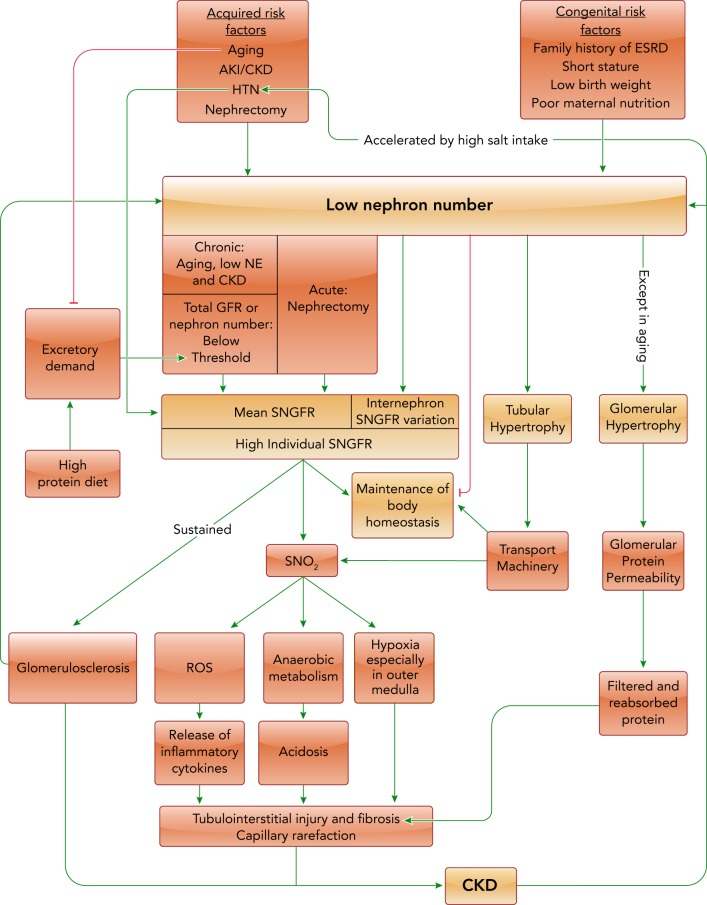FIGURE 2.
The causes, adaptations, and consequences of nephron deficit or loss
Green arrows indicate an enhancing effect. Red lines indicate an inhibitory effect. A nephron deficit or loss reduces the ability of the kidney to maintain body homeostasis. This triggers adaptations that can include an increase in mean SNGFR and tubular transport machinery. With acute nephron loss, as in nephrectomy, there is a rise in mean SNGFR. With a chronic deficit or loss of nephrons, mean SNGFR only rises when total GFR or nephron number decrease below a certain threshold, with the latter increasing when the body’s excretory demand on the kidney rises. The increase in mean SNGFR may also depend on the kidney’s ability to sustain single nephron hyperfunction. High individual SNGFR can induce deleterious consequences and lead to further nephron loss, when the physiological capacity of the given nephron is not able to sustain hyperfunction. Even though mean SNGFR may not increase, a low nephron number may enhance the internephron variation in SNGFR with some nephrons hyperfiltering. See text for additional details. HTN, hypertension; NE, nephron endowment; ROS, reactive oxygen species; SNO2, single nephron oxygen consumption.

